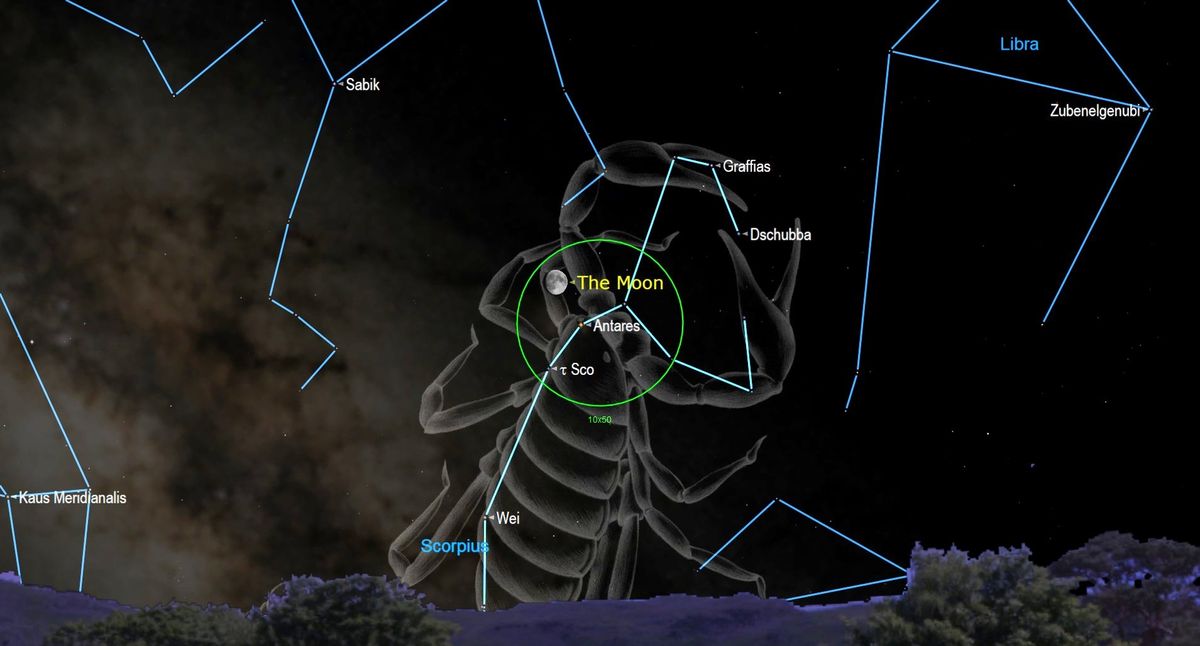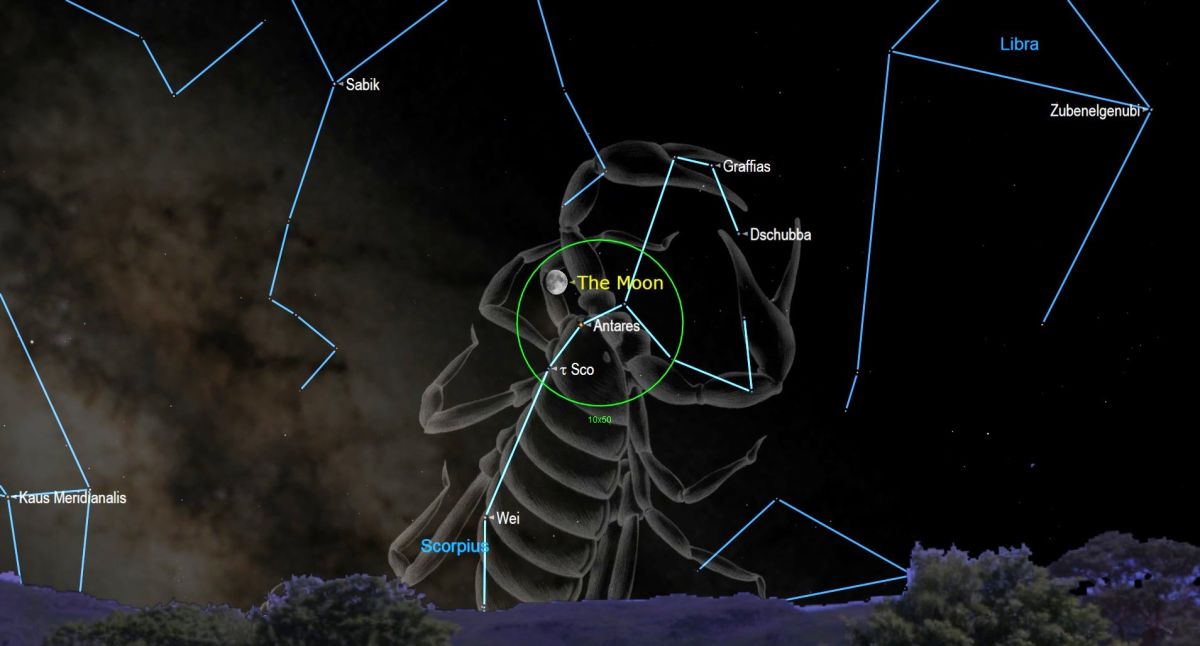
Look up to the southern sky on Sunday (July 10) to see the waxing gibbous moon shining brightly next to the luminous red star Antares.
The pair will be close enough to share the view in a pair of binoculars, as demonstrated by the green circle in the image above. You’ll also be able to catch the duo using a low magnification telescope.
“Antares will sparkle two finger widths” to the lower right of the moon, according to geophysicist Chris Vaughan, an amateur astronomer with SkySafari Software who oversees Space.com’s Night Sky calendar.
Related: The brightest planets in July’s night sky: How to see them (and when)
The moon and Antares will traverse the sky together before setting in the early hours of Monday morning (July 11).
Antares makes for an interesting skywatching target due to its striking appearance. It not only marks the heart of the constellation Scorpius but is also the 15th-brightest star in the night sky, according to Constellation Guide (opens in new tab).
“Its name is Latin for ‘rival of Mars,’ referring to its visual resemblance to that planet,” wrote Vaughan.
Antares is a red supergiant star that is nearing the end of its life. Once it has fully exhausted its fuel, the star will collapse and explode into a supernova, leaving behind a neutron star or black hole.
If you’re looking for a telescope or binoculars to observe the moon and Antares, our guides for the best binoculars deals and the best telescope deals now can help. Our best cameras for astrophotography and best lenses for astrophotography can also help you prepare to capture the next skywatching sight on your own.
And if you fancy setting your sights primarily on the moon, Our ultimate guide to observing the moon will help you plan your next skywatching venture whether it be exploring the lunar seas, mountainous terrain or the many craters that blanket the landscape. You can also see where astronauts, rovers and landers have ventured with our Apollo landing sites observing guide.
Follow us on Twitter@Spacedotcom (opens in new tab) and onFacebook (opens in new tab).



